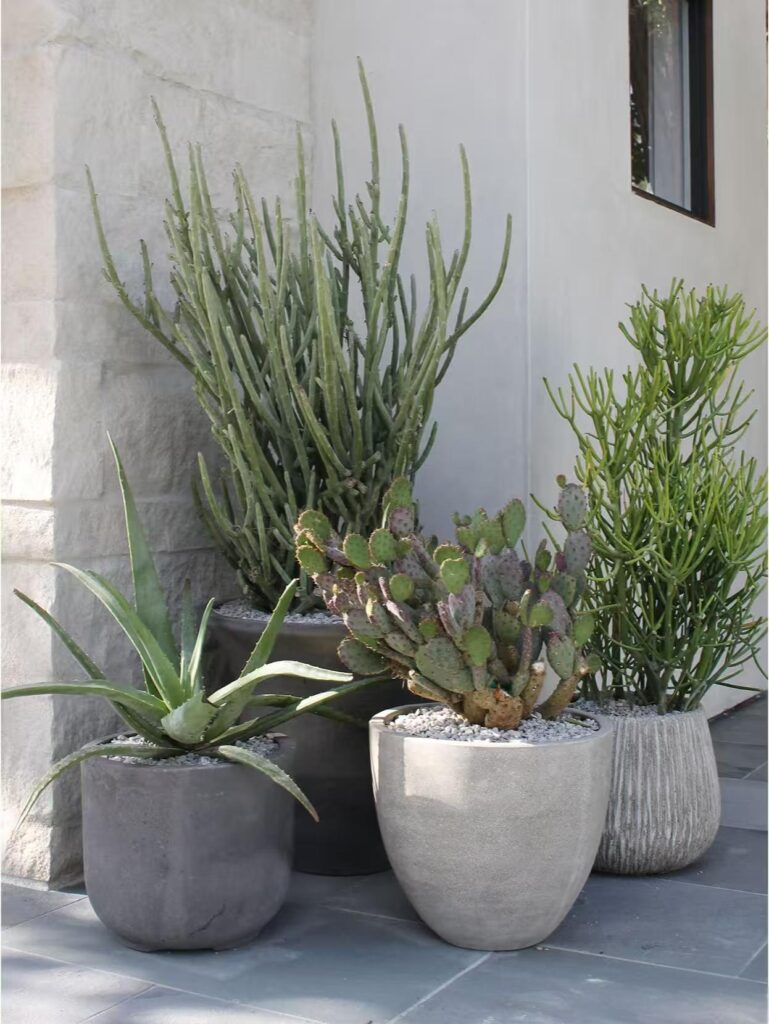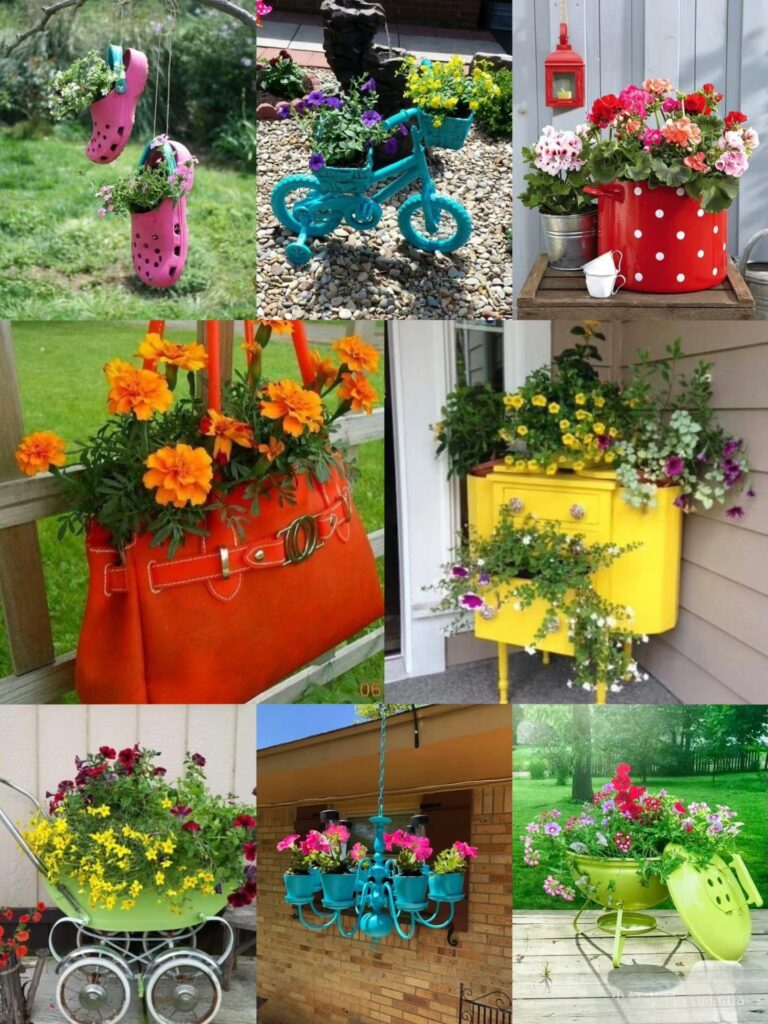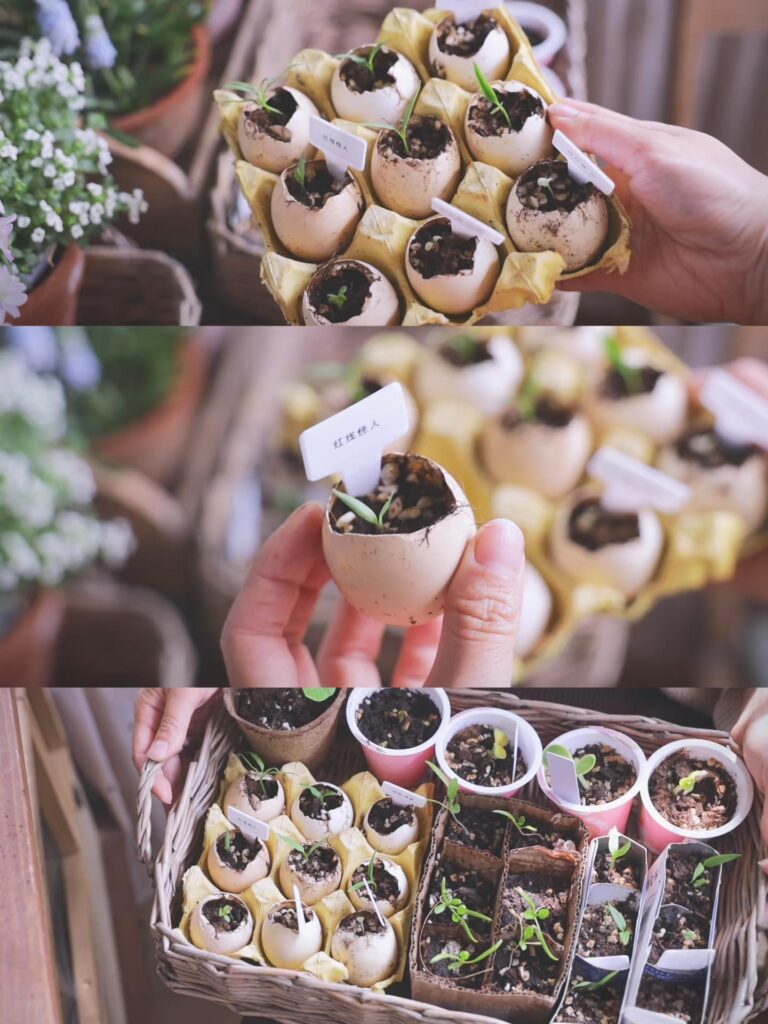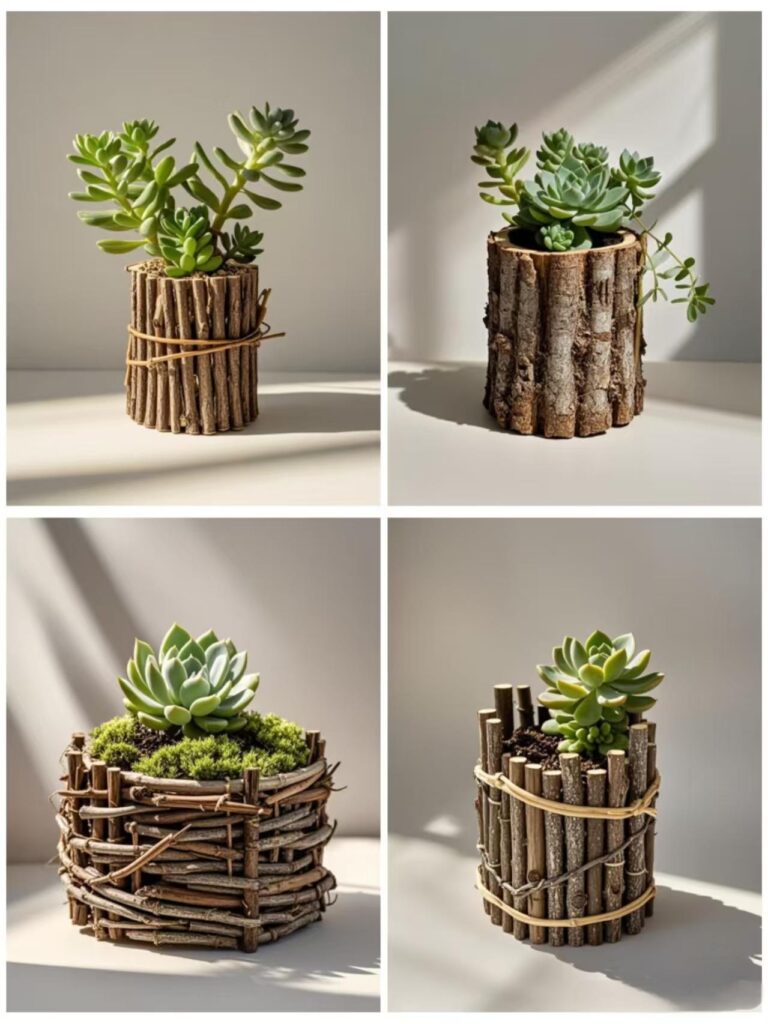When it comes to creating a beautiful and functional outdoor garden or patio, the right planting pots can make all the difference. The pots you choose not only enhance the visual appeal of your space but also ensure that your plants thrive. Here’s a comprehensive guide to help you select the perfect outdoor planters based on weather conditions, materials, and aesthetic preferences.
1. Consider the Weather Conditions
Your outdoor planters will face varying weather conditions depending on your location. It’s important to choose pots that can withstand these elements while keeping your plants healthy.
Hot and Dry Climates
- Terracotta and Clay: These materials are great for warm weather as they allow moisture to evaporate slowly, preventing overwatering. However, they can crack under freezing temperatures, so they’re best for regions with minimal frost.
- Plastic and Resin: These lightweight and durable materials retain moisture better, making them ideal for hot and dry conditions. They also resist cracking in the winter, unlike terracotta.
Cold and Wet Climates
- Concrete and Stone: These heavy-duty materials are perfect for colder climates as they can withstand freezing temperatures without cracking. However, they tend to be more expensive and are harder to move.
- Fiberglass and Resin: These materials are not only durable in cold conditions but also lightweight. They are a good choice for colder climates as they are less likely to freeze and crack compared to stone or clay.
2. Choose the Right Material
Selecting the right material for your outdoor planters is crucial not only for functionality but also for the overall aesthetic of your space. Different materials offer distinct advantages, so here’s a closer look at the most popular options.
Wood
Wooden planters offer a natural, rustic charm that blends well with outdoor gardens. However, they require proper maintenance to prevent decay from moisture and insects. Redwood, cedar, and teak are ideal choices for long-lasting wooden pots.
Plastic and Resin
Plastic and resin pots are lightweight, durable, and available in a variety of shapes and sizes. They are low-maintenance and resistant to weather extremes, making them a popular choice for gardeners who need flexible, long-lasting options. Resin pots are especially known for mimicking the appearance of stone or ceramic.
Ceramic and Terracotta
Both materials are traditional favorites that offer timeless beauty. Ceramic pots are often glazed and come in various colors, while terracotta pots have a more rustic, earthy appeal. The downside is that they tend to be heavier and can crack in extreme temperatures.
Fiberglass
Fiberglass planters combine the durability of stone and concrete but are much lighter in weight. These pots are long-lasting, resistant to weathering, and won’t crack under pressure. They also tend to be more expensive than plastic pots.
3. Think About Aesthetic Preferences
Outdoor planters are as much about style as they are about functionality. Your choice of pots should complement the overall look of your garden, patio, or balcony. Here are some aesthetic considerations to keep in mind:
Modern and Sleek
If your outdoor space features clean lines and a minimalist design, opt for pots with smooth surfaces in neutral colors like black, white, or gray. Matte finish ceramic or fiberglass pots are perfect for contemporary settings.
Rustic and Earthy
For a more natural or cottage-style garden, go for terracotta, stone, or wooden pots. These materials have an earthy charm that complements plants like succulents, herbs, and wildflowers.
Colorful and Bold
If you want to make a statement with your outdoor space, don’t shy away from vibrant and bold colors. Brightly painted ceramic or resin pots add a cheerful and lively touch to your patio or garden.
Vintage or Antique
Antique-style pots, often made of terracotta, stone, or even cast iron, can bring an old-world charm to your outdoor space. These are perfect for creating a vintage look that pairs well with roses, ivy, and other flowering plants.
4. Size and Drainage Are Key
No matter the material or style, the size of your planting pots matters. When selecting pots, make sure they are large enough to accommodate the roots of your plants and provide enough space for growth.
Drainage
Good drainage is crucial to prevent water from accumulating at the bottom of the pot, which can lead to root rot. Look for planters with drainage holes or choose pots that come with an optional saucer or tray to catch excess water. If you have plants that require a lot of moisture, consider adding a layer of pebbles at the bottom of the pot for better drainage.
5. Consider Mobility
If you like to change the arrangement of your garden or patio often, it’s important to choose lightweight planters that are easy to move. Resin and plastic pots are typically the best for this. You can also find planters with built-in wheels or casters for easy transport.
6. Budget and Longevity
The price of outdoor planters can vary greatly depending on the material, design, and size. While terracotta and plastic are usually budget-friendly, materials like stone and fiberglass tend to be more expensive. Keep in mind that investing in high-quality planters can save you money in the long run as they are more durable and resistant to wear and tear.



